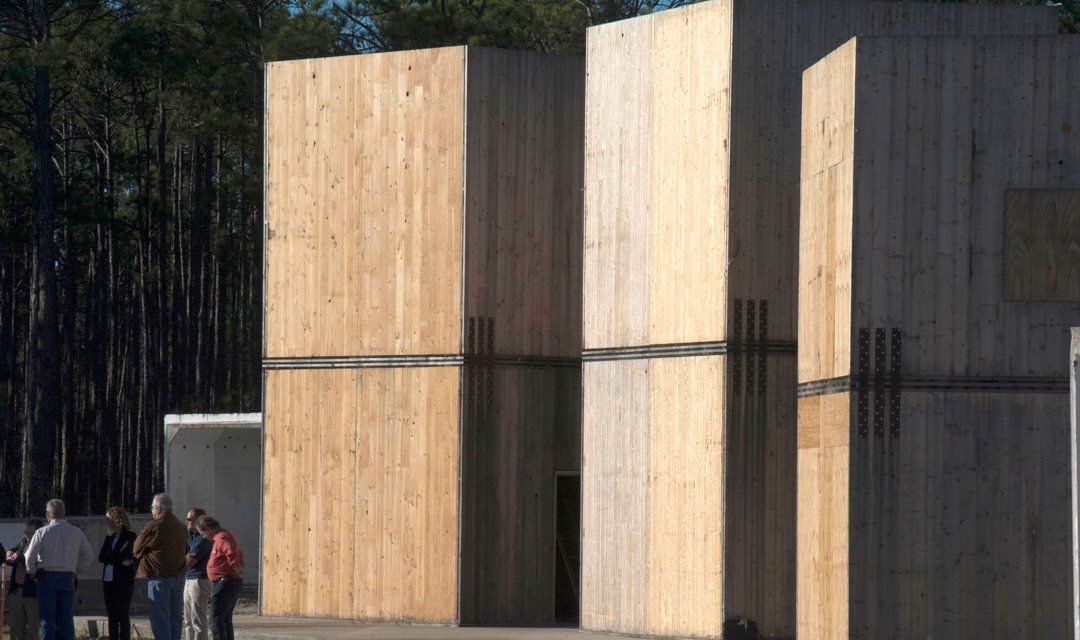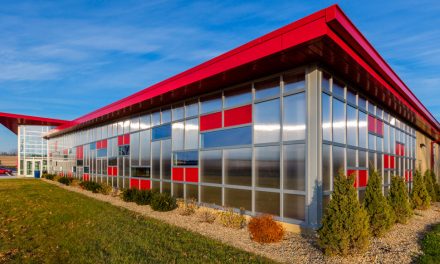WASHINGTON–(BUSINESS WIRE)— WoodWorks announced last Tuesday, that in cooperation with the USDA Forest Service Forest Products Lab and Softwood Lumber Board, they conducted a second series of blast tests on three existing two-story, single-bay cross-laminated timber (CLT) structures at Tyndall Air Force Base—the same structures involved in a series of initial blast tests performed in 2016. While a full analysis will be published early next year, on-site observations are decidedly positive. All structures remained intact under significant explosive loading well beyond their design capacity.
“Last year, we tested the structures under their own self-weight,” said Bill Parsons, VP of Operations for WoodWorks. “Those tests were successful and, this year, we built on that effort by testing whether the design methods established as a result of those initial tests needed to be adjusted when the buildings carried typical gravity loads and included different connection configurations, increased panel thickness, and alternate mass timber wall systems.”
Four tests were performed covering a spectrum of blast loads. For tests one and two, the size of the blast load and configuration of the structures were the same as prior testing, except the structures had axially-loaded front panels. The loads applied were intended to simulate conditions associated with a 5-story residential or office building. For tests three and four, different variables were altered on each of the buildings. One building used 5-ply CLT front wall panels, the second used off-the-shelf prefabricated angle brackets, and the third included nail-laminated timber (NLT) front panels. Reflected pressure, peak deflections, and panel acceleration were recorded at front and side faces in order to compare results to previous testing.
As with the tests performed in 2016, peak recorded deflections were consistent with pre-test predictions indicating the effectiveness of design assumptions and methodology in predicting elastic response of CLT to dynamic loads. The second test also indicated a controlled response in which localized panel rupture was observed but connection integrity and load carrying ability were not compromised for any of the loaded structures. Of particular note, all three structures remained standing following the fourth and largest blast, intended to take the structures well beyond their design intent. While panel rupture was expected and observed on all front and side wall panels, the buildings maintained enough residual capacity to remain intact and safe to enter.
Over the next couple months, WoodWorks will be working with Karagozian & Case, Inc., the Air Force Civil Engineer Center and the U.S. Army Corps of Engineers to analyze the results of these tests and develop design methods for use by blast engineers across the country.
About WoodWorks
WoodWorks-Wood Products Council (www.woodworks.org) provides free project assistance as well as education and resources related to the code-compliant design, engineering and construction of non-residential and multi-family wood buildings. WoodWorks technical experts offer support from design through construction on a wide range of building types, including multi-family/mixed-use, educational, commercial, retail, office, institutional, and public.



